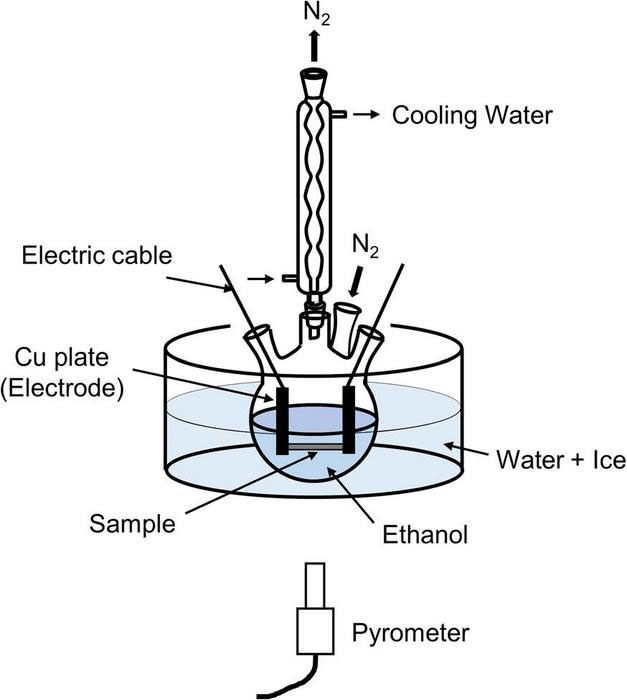| Aug 27, 2024 |
Liquid-phase synthesis unlocks efficient carbon nanotube production
(Nanowerk News) Single-walled carbon nanotubes (SWCNTs) are known for their remarkable properties, which make them essential in many advanced technologies. Yet, creating these nanotubes efficiently and on a large scale has been a persistent challenge.
|
|
Now, a team led by Professor Takahiro Maruyama at Meijo University has introduced a revolutionary method that utilizes cobalt (Co) and iridium (Ir) nanoparticle catalysts in a liquid-phase synthesis process. This innovative approach offers a promising solution to the longstanding issues of production efficiency and scalability.
|
|
These findings have been published in the Journal of Nanoparticle Research ("Liquid‑phase synthesis of single‑walled carbon nanotubes using Co and Ir nanoparticle catalysts").
|
 |
| The liquid-phase synthesis setup for SWCNT growth. (Imge: Takahiro Maruyama, Meijo University)
|
|
“Our primary objective was to develop a method that not only yields high-quality SWCNTs but also scales effectively for industrial applications,” explains Prof. Maruyama. “The Co and Ir nanoparticle catalysts have been instrumental in achieving these goals.”
|
|
The present research demonstrates that the Co catalyst substantially improves both the yield and the structural integrity of SWCNTs during the liquid-phase synthesis process. Unlike traditional gas-phase methods, this liquid-phase approach allows for better control over the reaction environment. This leads to more consistent results and a process that can be scaled up more effectively. The study also highlights that the Co and Ir catalysts retain their effectiveness through multiple cycles of use, which enhances the sustainability of the production process. As a result, the new method could potentially lower production costs, making SWCNTs more competitive in various markets.
|
|
Additionally, the Ir catalysts allow for precise adjustment of the nanotube diameters and chiralities, which are critical for tailoring their electronic and mechanical properties. This fine-tuning could lead to significant advancements in applications such as high-performance transistors and sensitive sensors. The study provides a detailed analysis showing that the SWCNTs produced with this method have fewer defects compared to those made with traditional techniques, which is expected to improve their performance in numerous applications.
|
|
Prof. Maruyama emphasizes the impact of these findings: “This advancement could enable a broader range of uses for SWCNTs in fields like electronics and energy storage, thanks to the enhanced production process.” Furthermore, the production of SWCNTs with fewer impurities could result in more efficient and reliable technologies. The improved quality of the nanotubes is likely to enhance their utility in various products, from flexible displays to cutting-edge batteries.
|
|
The implications of this study are far-reaching, potentially benefiting industries that produce flexible electronics, transistors, and energy storage systems. With better production techniques, SWCNTs may become a more practical option for these applications, spurring innovation and wider adoption. The new method also opens doors for further research into other nanomaterials, potentially leading to additional technological breakthroughs. Additionally, the research suggests that the Co-Ir catalytic system could be adapted for synthesizing different nanostructures, expanding its industrial applications.
|
|
Despite these promising results, the study acknowledges that more research is needed. While the findings are encouraging, optimizing the process for large-scale production is still a challenge. The long-term stability and reusability of the Co and Ir catalysts must be thoroughly evaluated to ensure they are practical for industrial use. Addressing these issues will be crucial for turning these laboratory successes into viable commercial solutions.
|
|
Looking to the future, Prof. Maruyama and his team are enthusiastic about the potential of this catalytic system. “We’re eager to explore how this technology can be applied to other carbon nanomaterials,” he states. “The opportunities are extensive, and we’re only beginning to tap into their full potential.”
|

